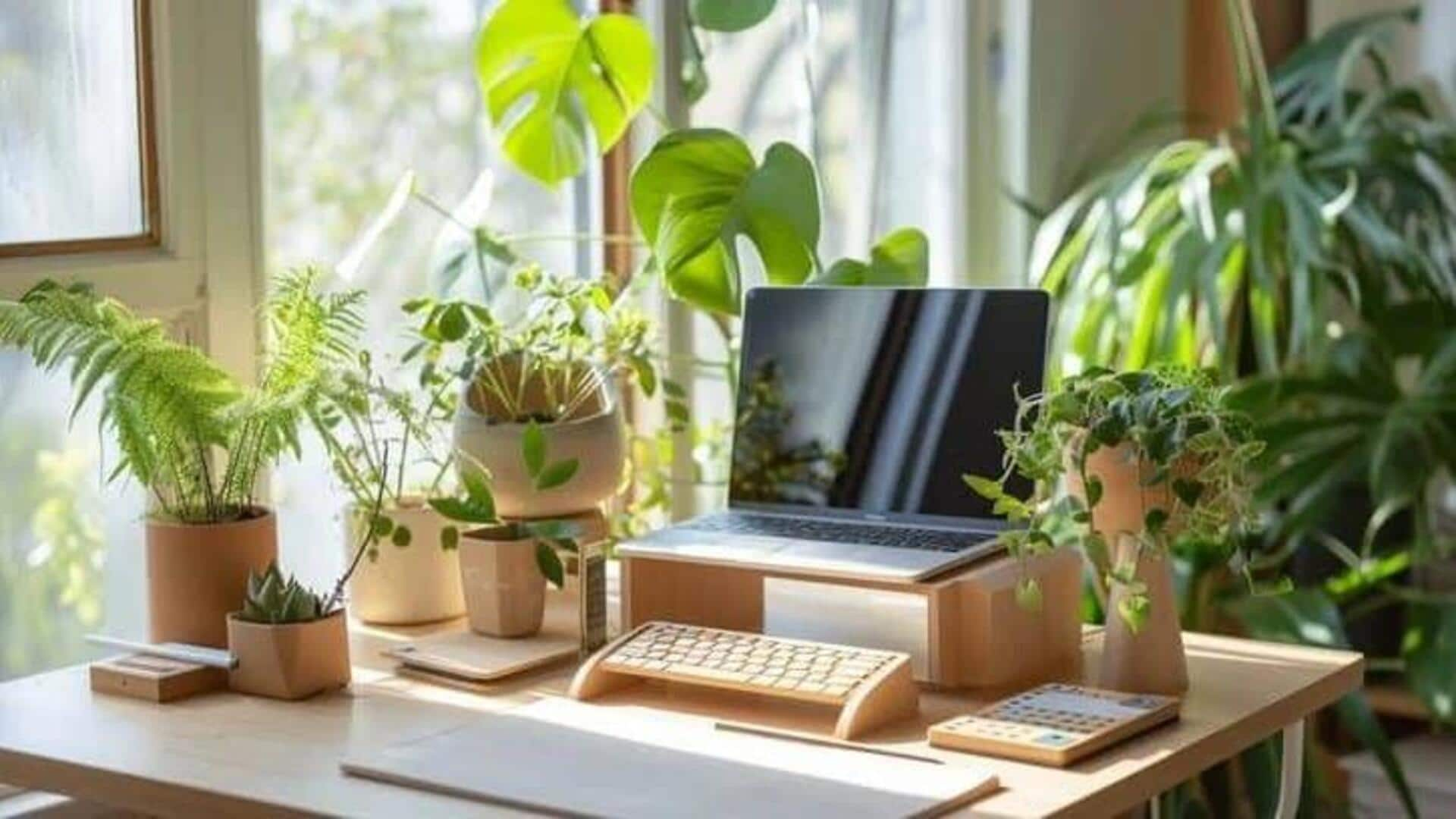
5 tips to revive your office plants
What's the story
Office plants are usually the worst hit when it comes to neglect. With busy work schedules and no proper care, they often wilt and die out. However, fret not, as a few simple steps can help get these green companions back on their feet. Here are some practical tips for reviving neglected office plants to help them thrive again.
Light check
Assess the light conditions
The first step in reviving office plants is assessing the light conditions in your workspace. Different plants have varying light requirements; some thrive in bright sunlight, while others prefer shade. Observe how much natural light your office receives throughout the day and adjust the plant's location accordingly. If natural light is insufficient, consider using artificial grow lights to supplement it.
Hydration balance
Water wisely
Proper watering is the key to healthy plants. Overwatering or underwatering can both lead to issues like root rot or dehydration. Check the soil moisture by inserting a finger about an inch deep into the soil; if it feels dry, it's time to water. Also, ensure that pots have drainage holes to prevent waterlogging, which can harm roots.
Trim Care
Prune dead leaves and stems
Pruning dead leaves and stems also helps redirect energy toward new growth and improves the overall appearance of the plant. Use clean scissors or pruning shears to remove any brown or yellowing leaves at their base. Regular pruning encourages healthier growth patterns and prevents disease spread among plant parts.
Nutrient boost
Feed with fertilizer
Plants also need nutrients to flourish, which they may not receive from the soil alone, especially in an office setting. Use a balanced liquid fertilizer every four to six weeks during active growing seasons such as spring and summer. Follow package instructions carefully regarding dilution rates so as not to over-fertilize.
Moisture watch
Monitor humidity levels
Office environments tend to be low in humidity as air conditioning systems dry out air quickly. This impacts many indoor plants negatively since most prefer higher humidity levels around 40%-60%. Increase humidity by misting leaves regularly with water spray bottles or placing trays filled with pebbles under pots. Excess water evaporates slowly, creating humid microclimates around them without soaking roots directly into standing water below trays themselves.